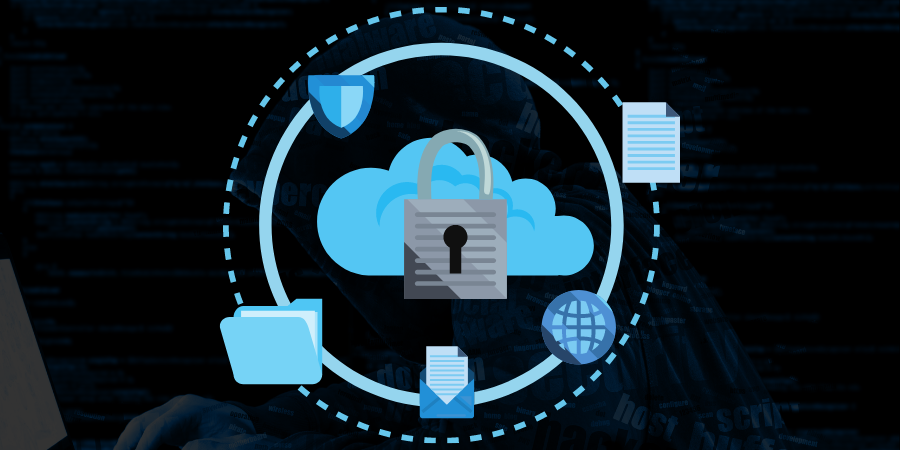
Cybercrimes are expanding exponentially in complexity and frequency, harming the expedient business network and system, inviting global cyber risk, and disrupting privacy management.
To stay strong in such an uncertain landscape, there should be a priority to secure data, applications, networks of a business, and critical business operations and processes. In such sensitive cases, conventional security solutions and methodologies cannot resist present sophisticated cybercrimes. To rescue here, cyber resilience comes into the picture.
Defining Cyber Resilience
Cyber resilience: A digital fitness - A secured approach for enterprises incorporating cybersecurity’s regimen, business consistency, and enterprise resilience.
In its simplest terms, cyber resilience is the strength of an organization that allows it to accelerate business through adapting, responding, and recovering from any sort of cyber threat. A cyber-resilient business is adaptive for known, unknown crises, threats, and challenges.
Supporting an organization to prevent cyber risks and defend against the severity of attacks, cyber resilience provides continual survival of business despite the attack. A proactive cyber-resilient system can assist in -
- Lowering financial expenses,
- Satisfying authorized and regulatory requirements, for example, Network and Information Systems (NIS) regulation, General Data Protection Regulation (GDPR) to improve incident response management, and business continuity management.
- Upgrading the internal operations, processes, productivity, efficiencies, and business culture
- Preserving the brand and maintaining its prestige.
A swift inclination towards digital transformation and large-scale industry convergence has invited unintended possibilities for risks, vulnerabilities, unknown attacks, and failure. In those conditions, an appropriate cyber resilience strategy facilitates business in reducing risks, financial bounce, and reputational casualty.
What are the possible cyber risks?
A generic definition by PwC: “Cyber risk is any risk associated with financial loss, disruption or damage to the reputation of an organization from failure, unauthorized or erroneous use of its information systems.”
Cyber risk, or cybersecurity risk as it is known, is the critical exposure of loss or an attack to the root of an organization’s information or intelligence system; frequently reported modes of cyber risks are cyber-attacks and data branches.
Apart from damages, destruction, financial losses, cyber risks account for extortion of intellectual property, productivity harms, and ruined reputation. Common types of cyber risks are;
- Phishing: It is the type of social engineering attack where an attacker sends an email with an attachment to the person within an organization in an attempt to trick them via opening email to dispatch malware or ransomware into the system or to steal credentials allowing the attacker to access the confidential data and network of the organization.
- Malware: Malware is in the form of viruses, keyloggers, spyware, worms, and many more. These are the types of malicious software being installed into computers. When attachments over phishing emails are opened, or links are clicked, they breach information by exploiting network accountabilities.
- Ransomware: This malware locks a user out of his information system until a demanded ransom is paid to unlock it.
- A distributed denial-of-service attack (DDoS): An attack across the central server system of an organization with simultaneous data requests that freeze the system up, holds the company hostage until and unless the attacker's demands are met.
Internal and external threats
Internal threats concern cybersecurity risks rooted within the organization to exploit the network system or induce damage.
One of the primary causes of this abuse is extensive privileges provided to the most trustworthy employees under the organization.
The non-involvement of an organization in such practices enables employees to cause digital destruction. These threats are listed below:
- Network Security Threats
- Human Threats
- Physical Security Threats
- Legal Threats
- Social and Economic Threats
- Software Threats
- Communication Security Threats
In contrast, external threats originate extrinsically from an organization, majorly generated from the environment in which the organization operates.
Conducting to steal data, disturb company processes, demolish companies’ operations, and external threats count the possibility of global subversion of an organization. These threats are following types:
- External Suppliers
- Social Engineering
- Cyber Attacks
- Poor Defense
- Outdated Software
- Exploitation
Attack Surface Reduction
The process of constant holistic exploration, inventory, categorization, prioritization, and consistent security monitoring of external digital assets aimed to store, transfer and process sensitive data is known as attack surface management.
Attack surface management: An aggregation of complete security risk incidents.
Or simply a collection of all known, unknown, & potential vulnerabilities and control over the matrices of hardware, software, and feasible network components. Touching a forte system from multiple locations, components, security layers of the target system, an attacker can disrupt a great section of vulnerabilities and mount an attack.
A practical cyber resilience approach is accounted for to salvage a business or expertise of a network system/operation. Because:
- A cyber-resilient business can operate effectively under persistent threats and sophisticated attacks while allowing organizations to maintain severance safely, augment customer trust, and prompt shareholder values.
- Additionally, escalating the role and purpose of security in the organization, a cyber-resilient business demands industry experts to communicate the essence and implications and monitor to ensure all employees are corporate in their successful employment.
Consequently, a business should have a cyber resilience program to maintain business vitality, even before and after cyber attacks.
Digital Solutions: The Savior
Smart solutions can provide a continuum monitor and protection to your company, brand, and digital assets by virtue of extrinsic adversaries. Leveraging these solutions will allow you to identify your exposure, compile risk, and remediate cyber issues before they take place.
Moreover, cyber resilience and attack surface management can augment the security of network systems to an extended level as conventional security controls methods such as penetration testing or security questionnaires are no longer accepted for reducing cyber risks.



























 Batoi Corporate Office
Batoi Corporate Office